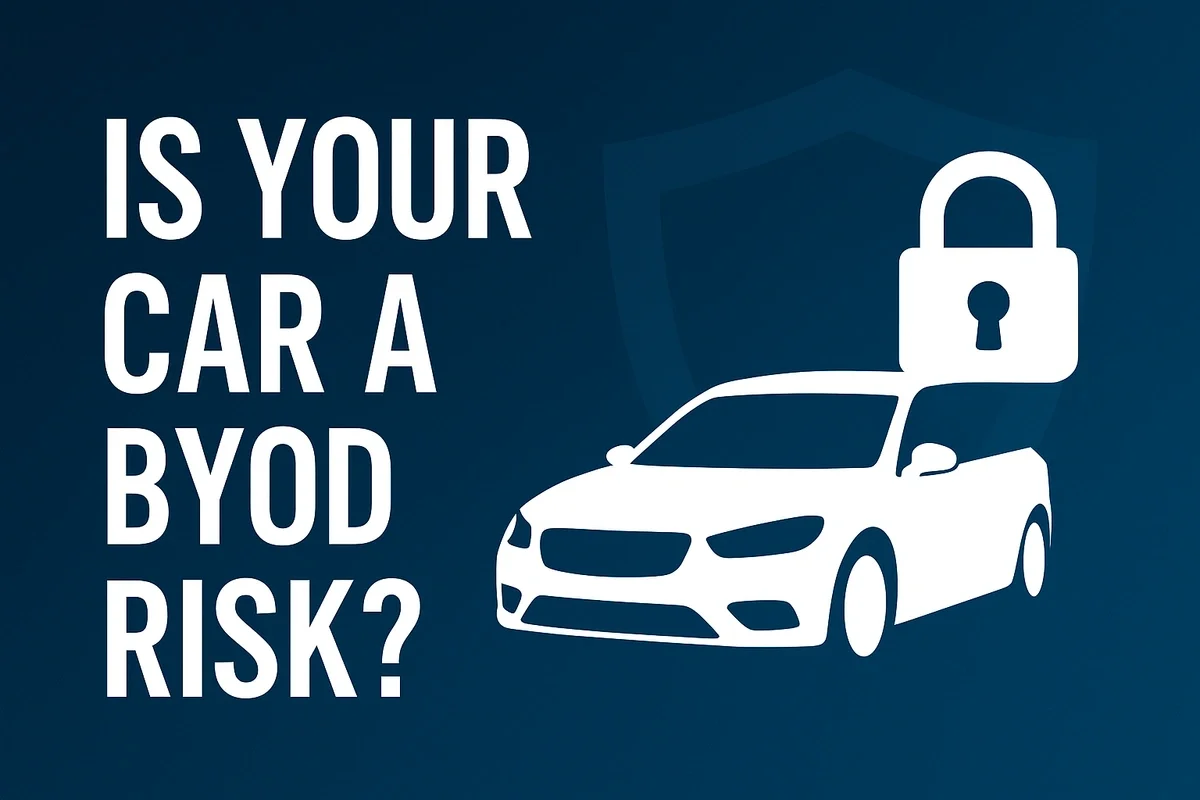
What researchers showed — in plain language
At a recent security conference, researchers demonstrated a compact, low-cost attack chain that started in a parking lot and ended with access to corporate systems. The attacker used simple, off-the-shelf tools to interfere with a vehicle's wireless connection, trick a user’s phone into connecting to a malicious device, install a small piece of malware on the phone, and then wait for that phone to connect to the corporate network — giving the attacker a path to sensitive servers.
The important takeaway is this: modern attack chains often look for the easiest, least-monitored route into an organization — and that route can be as mundane as the gap between a car, a phone, and the corporate network.
How the attack worked (high-level)
- Disrupt the normal connection: The attacker jams or spoofs vehicle Bluetooth signals so the phone cannot pair cleanly with the legitimate car head unit.
- Spoof a trusted device: Using a small hacker tool, the attacker advertises a fake Bluetooth device, luring the phone to connect.
- Deliver a payload: The attacker uses common gadgets and techniques (for example, BadUSB-style input emulation or an APK drop) to install software on the phone.
- Wait for lateral movement: Once the phone connects to corporate Wi-Fi or other internal resources, the attacker leverages that foothold to move into servers and hypervisors.
Why this matters for small and mid-sized businesses
It would be easy to dismiss this as an exotic, “enterprise-only” risk, but the reality is different. Attackers look for the path of least resistance. Any organization that allows employee-owned or company-managed mobile devices to interact with business systems may have similar blind spots — especially where mobile devices, vehicle connectivity, and corporate access overlap.
Also worth noting: the attack did not rely on a sophisticated zero-day. Instead, it chained simple, inexpensive techniques and leveraged gaps between systems — the kinds of gaps many organizations overlook.
Practical steps to reduce your BYOC (Bring-Your-Own-Car) risk
These recommendations are practical and prioritized for businesses that want to reduce exposure quickly.
1. Enforce mobile device management (MDM) and security posture checks
Require corporate policies that enroll mobile devices in an MDM solution, enforce device encryption, and ensure endpoint security agents are present and healthy before a device is allowed to access internal resources.
2. Use strong network segmentation and access controls
Keep guest, BYOD, and vehicle-connected devices separated from systems that store sensitive data. Limit automatic trust — for example, don’t automatically allow devices that connect to your Wi-Fi to access domain resources without validation.
3. Harden the “glue” between systems
Many breaches succeed because systems don’t communicate well. Centralize logging, use identity-aware proxies or conditional access policies, and ensure your EDR/XDR and MDM solutions share telemetry so anomalies can be detected across device and network boundaries.
4. Train staff on safe pairing and suspicious activity
A short, practical training note to employees can prevent many social-engineering or convenience-driven mistakes: avoid pairing devices in public, verify device names before connecting, and report any unexpected pairing prompts.
5. Restrict the use of high-privilege accounts on mobile devices
Avoid granting mobile devices broad administrative capabilities. Use least-privilege principles and require secondary approval workflows for high-risk operations initiated from mobile endpoints.
What Riverside Technologies can do for you
Riverside Technologies helps organizations close the gaps attackers exploit. Our services include:
- MDM deployment and policy configuration
- Network segmentation and secure Wi-Fi design
- Integrated telemetry (EDR/MDM/SIEM) so cross-device threats are detected faster
- Employee training tailored to real-world attack chains like BYOC
- Incident response planning that accounts for mobile and physical-proximity vectors
If you manage mobile devices or company fleet vehicles — or if employees connect personal phones to work systems — now is a good time for a focused review. Schedule a Free Security Review
Share this post
Tags
Need IT Support?
Let Riverside Technologies help your business with comprehensive IT solutions.
Contact Us Today